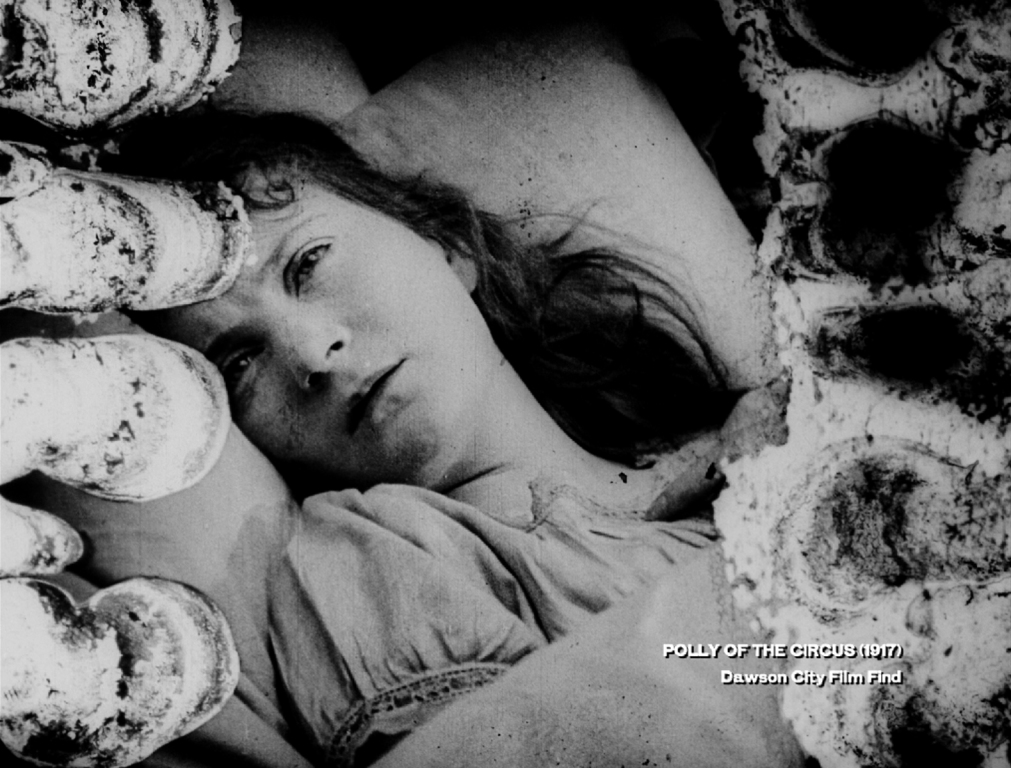Everyday Activist - Dawson City: Frozen Time (2016)
Posted on Friday, March 27, 2020 at 12:00 PM

Dawson City: Frozen Time (2016)
Movie Review by Everyday Activist X CalgaryMovies.com
With the COVID-19 pandemic in full swing, the Northwest Territories have restricted travel. I had applied for a couple jobs up north for summer, but received my rejection letters last week. The next best thing was to work through my Kanopy watchlist which included Dawson City: Frozen Time. Having been to the new MacBride Museum in Whitehorse, I watched City of Gold (1957) and was under the impression Frozen Time was similar. While both talk about life in Dawson City during the Gold Rush, the latter weaves historical and technological developments with personal stories and the unearthed silent film footage.
Filmmaker, Bill Morrison, takes us on a journey to the Klondike via the Chilkoot Trail using silent films and archival footage to connect us with names, photos and places we may recognize. Eric Hegg, a photographer, took some of the most iconic images of the Klondike, using glass plates covered in a photosensitive emulsion. The plates, left behind in Dawson when Hegg went to Alaska, were discovered decades later in people’s homes. The home owners wanted to remove the emulsion to reuse the glass, but the shop recognized the value, giving them new glass and shipping the plates to Ottawa for archiving. Donald Trump’s immigrant grandfather, Friedrich Trump, owned a brothel in Whitehorse during the Gold Rush. Alexander Pantages honed his entertainment skills in Dawson’s theatre business. Guggenheim’s owned The Yukon Gold Company. No film about the Gold Rush is ever complete without mentioning Robert Service or Jack London.
The main storyline forms when in the late 1970s, Dawson City was excavating some land where an old recreation center used to be. They found piles of film from the early 1900s. Because movies at that time were made on film that easily caught fire, many copies in other parts of the world were lost. The ones in Dawson survived in cold, dry conditions under what once was a swimming pool. Once discovered, they were stored in an old root cellar to be cataloged and eventually shipped to Ottawa via Hercules aircraft for restoration and archiving. Their discovery also cemented a local romance lasting forty years.
Shipping costs to the Yukon are still expensive. In the early 1900s, once the films made it to Dawson, the studios didn’t want to pay for shipping it back. The bank held onto them, until one of the managers needed to fill a drained swimming pool for his hockey team to have smooth ice to skate on in the winter. Since no one wanted them, into the pool they went. Ones that didn’t make it to the pool were destroyed via sending trash down the river or in a massive bonfire. History up in smoke.
Another interesting feature of films were the newsreels. The Dawson City cache contained baseball games from the early 1900s, because they were part of a gambling scandal that made headlines and first world war footage. Some of the film documentation was done by a local person taking footage of fires or demolitions that happened. Morrison includes news articles and other media to tell his fascinating story. As Canadians we’re weak in our own history as Chris Turner points out in his Tedx Talk. Of course he’s also talking about Dawson City.
Calgary Showtimes: Dawson City: Frozen Time (2016) >
NOTE: The showtimes listed on CalgaryMovies.com come directly from the theatres' announced schedules, which are distributed to us on a weekly basis. All showtimes are subject to change without notice or recourse to CalgaryMovies.com.